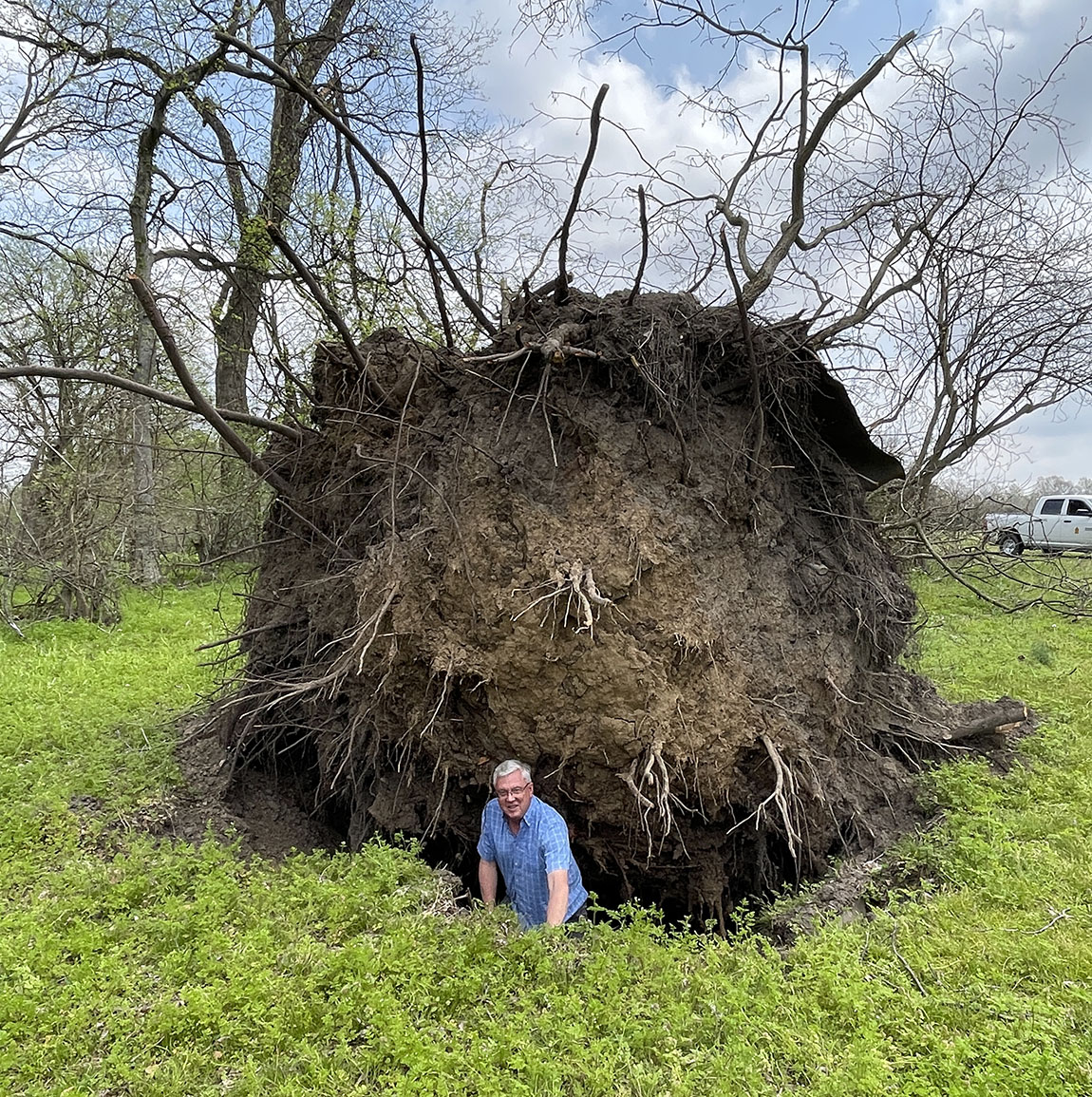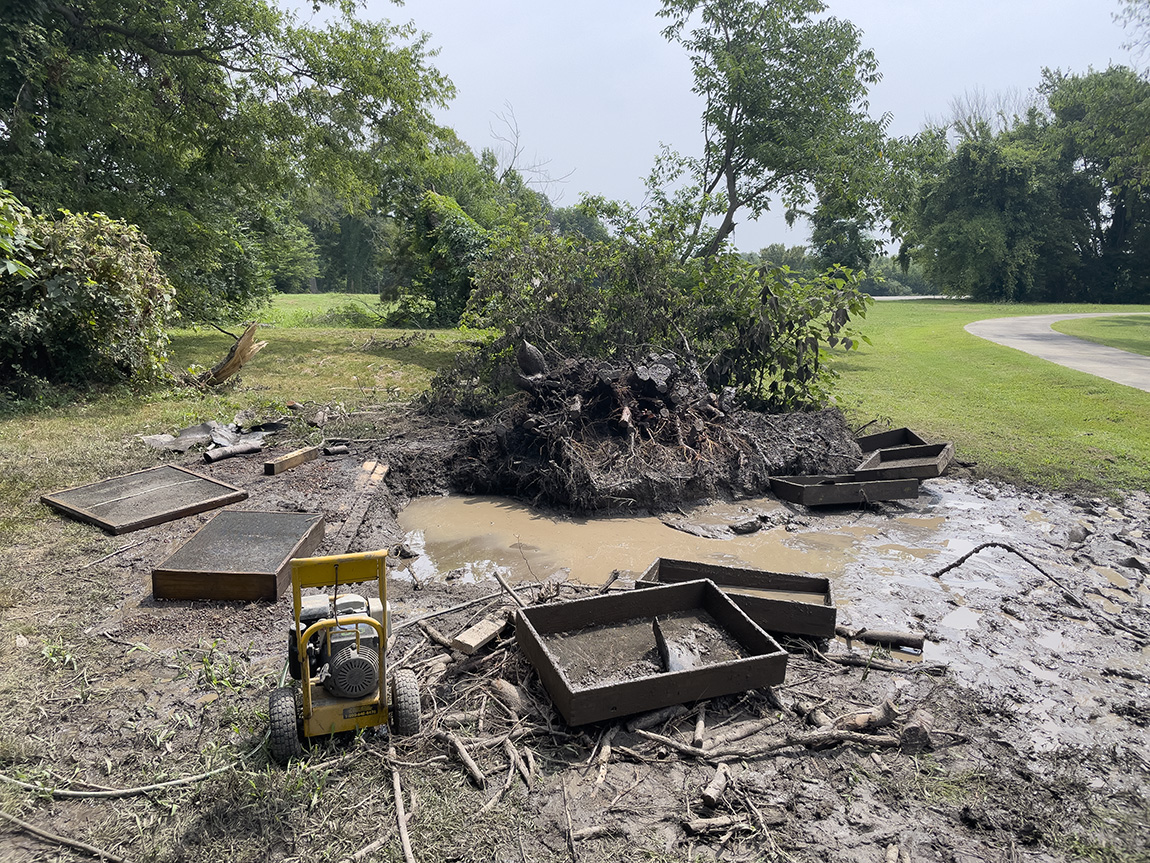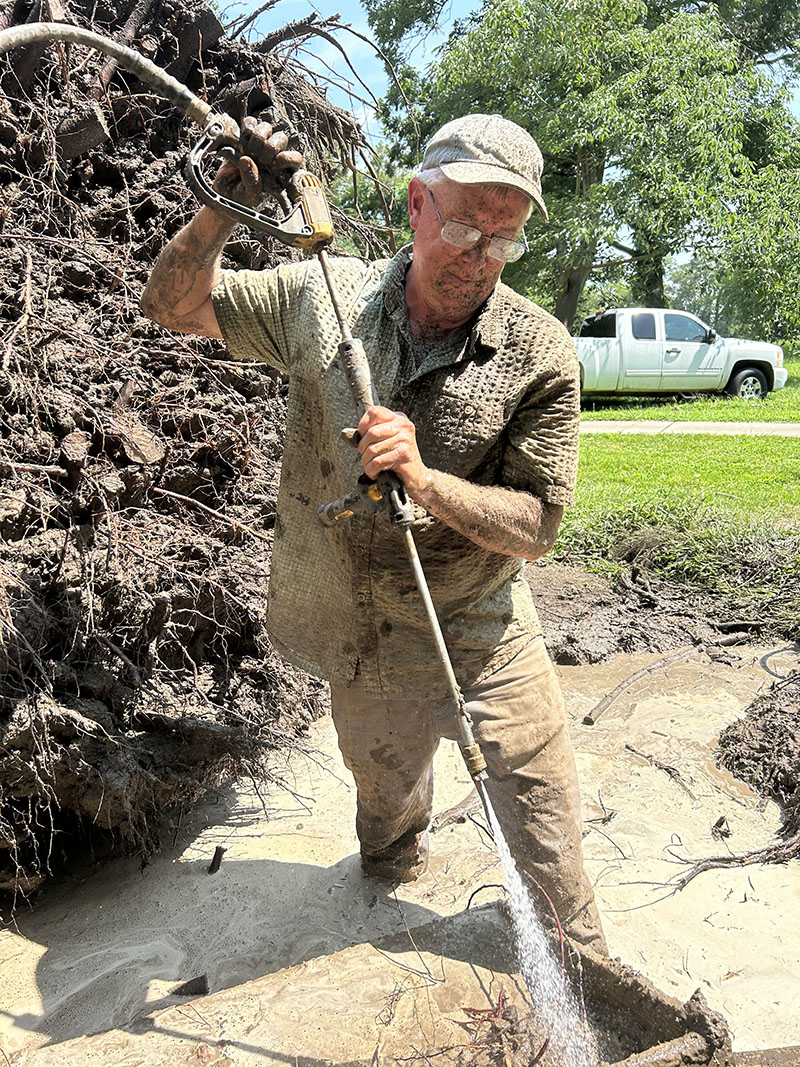

On March 31, 2023, a series of storms and a tornado outbreak devastated Cross County, Arkansas. The town of Wynne was hit especially hard. Parkin Archeological State Park, the location of a sixteenth century (and earlier) Native American fortified town, located 15 miles to the east of Wynne mostly escaped damage, but some trees were blown over in the storm. One large pecan tree on the north end of the archeological site went down, pulling up a root ball encased in soil and leaving a 5 to 6-foot-deep hole into the ground (Figure 1). Tim Mulvihill, UAFS Station Archeologist (and former Station Assistant at Parkin), recorded the profile of one side of the hole which showed several layers from hundreds of years of occupation at the site (Figure 2). The root system had disturbed the top of the profile, but at least one previous surface could be seen towards the bottom, along with midden (trash) deposits, and an intrusion in the middle of the profile, going down into the sterile subsoil at the bottom. We know from previous excavations that artifacts are extremely plentiful at the site, mostly consisting of pottery sherds, animal bone, daub (the clay that was plastered on their houses), stone tools or the flakes produced from making them, and also historic artifacts from when the Sawdust Hill community occupied the site. And now many of these artifacts had been displaced—caught up in the soil-incased root ball. Park Interpreter Nathan Odom collected some artifacts, as rain would expose them, and also screened some of the soil through ¼” mesh. After consulting with the Arkansas State Parks staff, we decided to power wash the soil out of the root ball into screens sitting below it to recover the artifacts before the roots and the rest of the tree was removed from the site.
Starting July 24, Mulvihill and Park Superintendent Ben Swadley spent several days over the next two weeks washing the soil and artifacts out of the root ball. It wasn’t as easy as it sounds (Figures 3-6). The soils on the site contain large amounts of clay, and are not easily broken up or screened. One of our main concerns was that there was the possibility of human remains being present in the root ball. Precontact burials are scattered all across the site rather than being concentrated in one area. Also, the downed tree was close to the edge of the historic cemetery that is at the north end of the site. Fortunately, no human remains were found. We did find hundreds of artifacts including pottery sherds, animal bone, daub, stone flakes, broken projectile points, and lots of historic artifacts as well (Figure 7-8).


Patricia Doughty, Seasonal Interpreter at the Park, also helped with the screening process for several days (Figure 9). And we couldn’t have done it without the help of Roy Vance, Maintenance Technician, and Park Specialist II Theo Melton, who brought together all of the equipment that we used during the process, kept everything running, and filled up the water tanks each morning.




